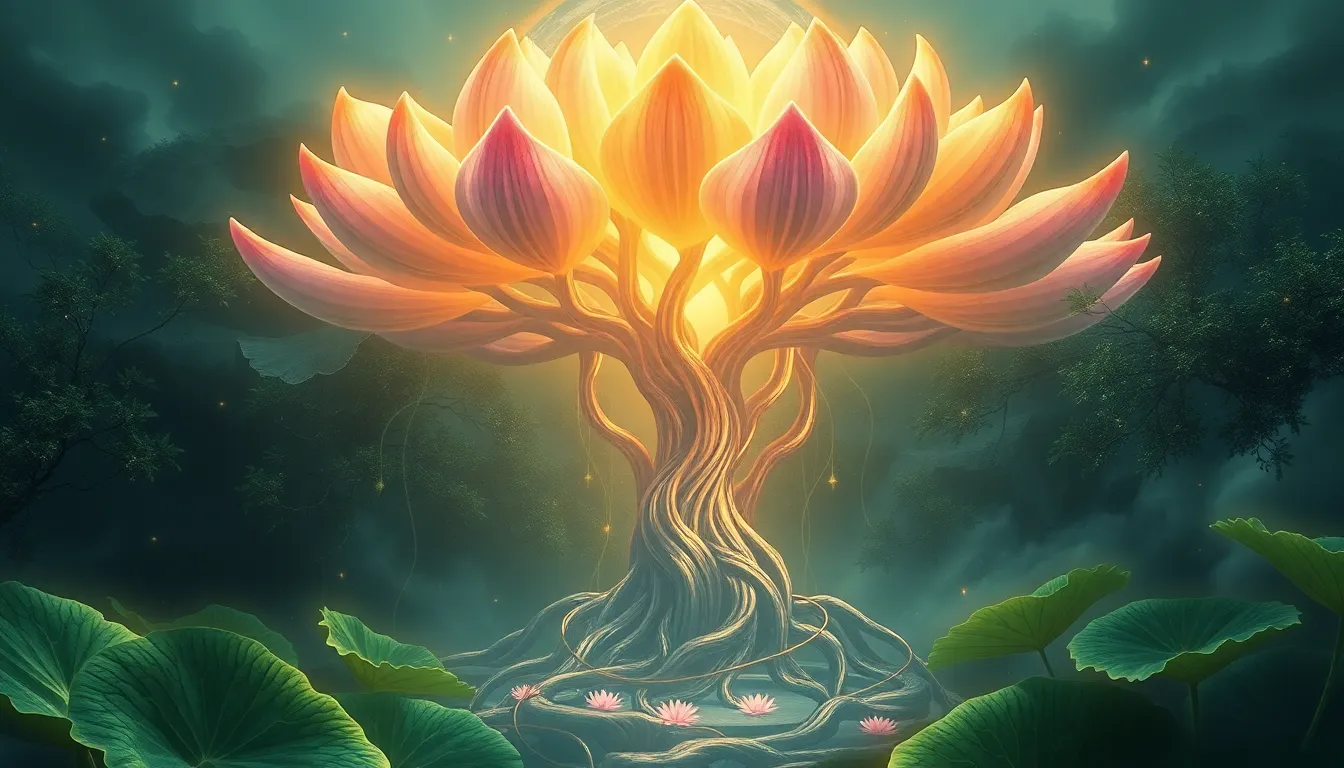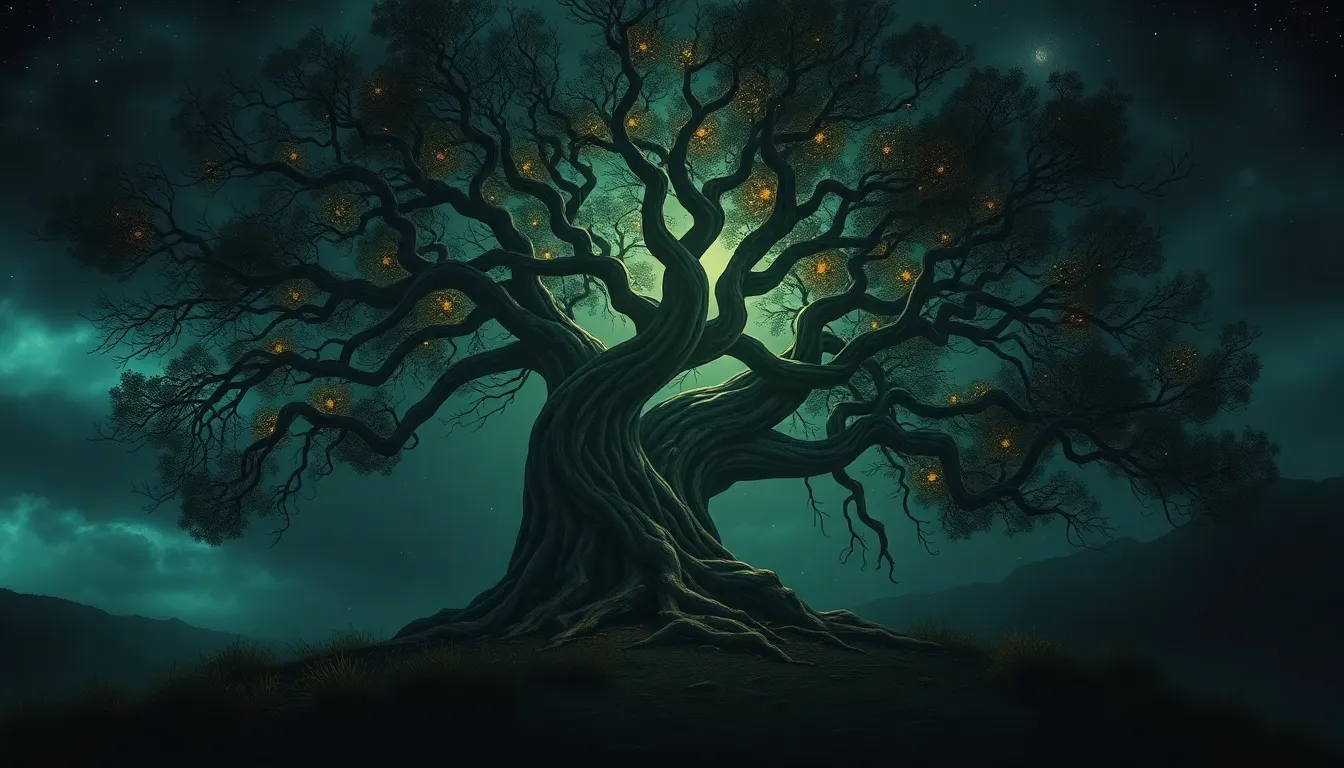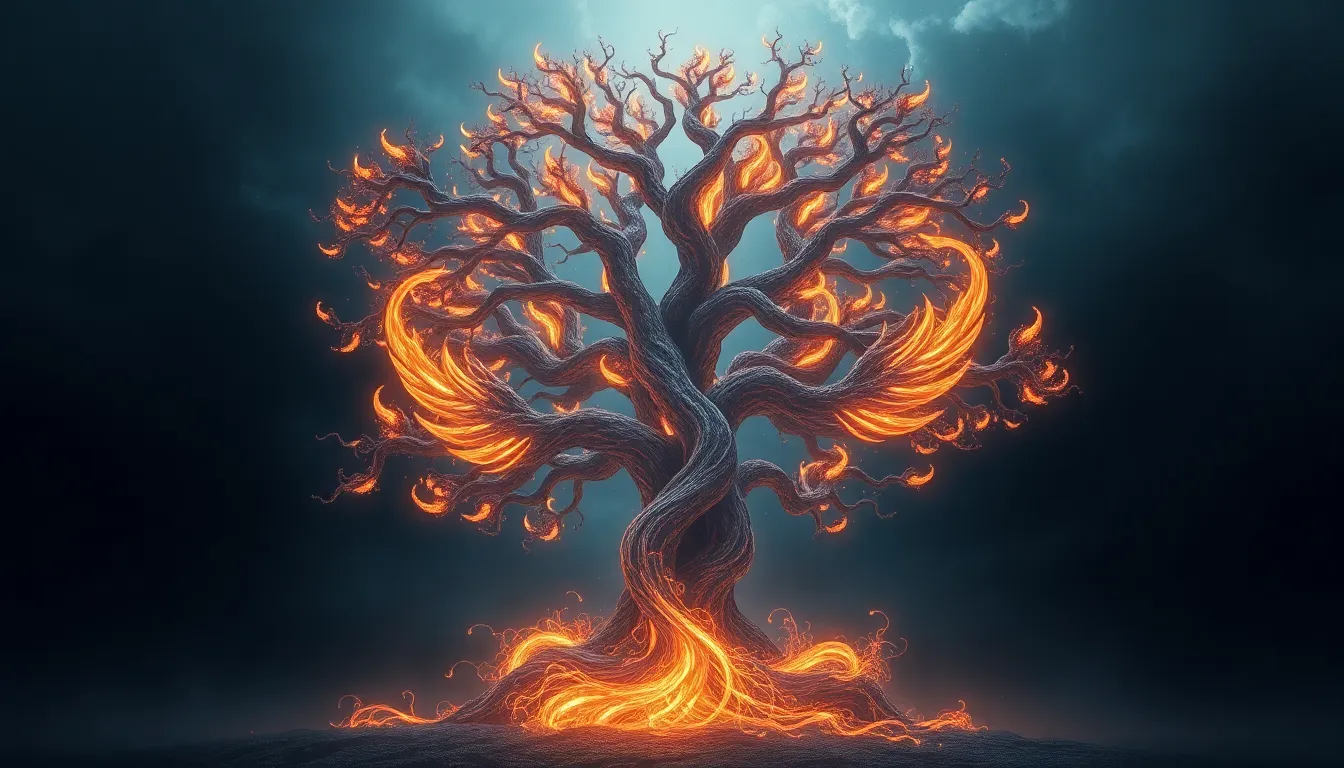The Tree of the Ancestors: Myths of Connection and Heritage
1. Introduction: The Significance of Ancestral Trees
The ancestral tree, often referred to as a family tree, is a visual representation of lineage and heritage. It encapsulates not just familial connections, but also the stories and legacies passed down through generations. Across various cultures, ancestral trees hold significant cultural importance, serving as a means to understand one’s roots, identity, and the historical context of familial connections.
The themes of connection and heritage embedded within ancestral trees highlight the universal human desire to belong and understand our place in the world. They remind us that our identities are not formed in isolation but are deeply intertwined with the lives of those who came before us.
2. Roots of Belief: The Historical Context of Ancestral Trees
The concept of ancestral trees can be traced back to ancient civilizations, where the lineage was essential to social structure and identity. Early records from Mesopotamia and Egypt reveal that lineage was documented meticulously, often for purposes of inheritance and social status.
For instance:
- Mesopotamia: The Sumerians created early forms of genealogical records to establish rights and ownership.
- Ancient Egypt: Pharaohs traced their lineage back to gods, using family trees to legitimize their rule.
As cultures evolved, so did the understanding and representation of lineage. Ancestral trees became more than mere lists of names; they transformed into symbols of cultural heritage and identity.
3. Cultural Variations: Ancestral Trees Around the World
Across the globe, ancestral trees manifest in diverse forms, each reflecting distinct cultural values and beliefs. In Indigenous cultures, for example, ancestral trees often incorporate spiritual elements, connecting the living with their ancestors in a sacred way.
In Asia, particularly in countries like China, ancestral worship is deeply rooted in cultural practices, with family trees often displayed prominently in homes. In European cultures, family crests and heraldry serve as visual representations of lineage and nobility.
These variations underscore the importance of heritage in shaping cultural identities:
- Indigenous Cultures: Ancestral trees are often intricately linked to land and spirituality.
- Asian Heritage: Emphasis on ancestor veneration and continuity through rituals.
- European Lineages: Focus on documented history, nobility, and family pride.
4. Myths and Legends: Stories Embedded in Ancestral Trees
The stories woven into ancestral trees are rich with mythology and legend. Many cultures feature trees in their creation myths, representing life, growth, and connections among all living beings. For example, the Norse Yggdrasil is an immense tree that connects all realms of existence, symbolizing the interdependence of life.
These myths play a crucial role in shaping community identity and values. They provide narratives that people can relate to, reinforcing their connection to their ancestry and heritage.
5. The Tree as a Symbol of Connection
Ancestral trees serve as powerful symbols of familial and communal ties. The visual representation of a tree, with its branches and roots, illustrates how individuals are interconnected, not just in blood but in shared experiences and histories.
Furthermore, trees symbolize:
- Growth: Just as trees grow and branch out, so do families and communities.
- Diversity: The variety of branches reflects the diversity of individual experiences and paths.
- Interdependence: The health of a tree depends on its roots, just as communities thrive on their connections.
Personal narratives often highlight the emotional significance of these connections, illustrating how knowledge of one’s ancestry can foster a sense of belonging and identity.
6. Heritage and Identity: The Impact of Ancestral Knowledge
Understanding one’s ancestry significantly influences personal and collective identity. Knowledge of heritage can instill pride and a sense of responsibility towards preserving cultural traditions. Ancestral trees are not just historical documents; they serve as living narratives that foster community cohesion.
For example, many indigenous groups are revitalizing their ancestral heritage through cultural practices, language preservation, and community gatherings. These efforts demonstrate how awareness of ancestry can strengthen communal bonds and enhance cultural pride.
7. Modern Applications: Genealogy and the Digital Age
In the digital age, the pursuit of ancestral knowledge has been revolutionized by genealogy resources and tools. DNA testing services, online databases, and genealogical software have made it easier for individuals to explore their heritage.
Some popular resources include:
- Ancestry.com: A comprehensive database for tracing family history.
- 23andMe: A DNA testing service that provides genetic ancestry information.
- FamilySearch: A free genealogy website maintained by The Church of Jesus Christ of Latter-day Saints.
While technology enhances the exploration of family history, it also raises ethical considerations, such as privacy concerns and the implications of genetic testing.
8. Challenges and Controversies: The Dark Side of Ancestral Narratives
As with any narrative, the stories surrounding ancestry can become mythologized or romanticized. This can lead to issues such as cultural appropriation or exclusion, where individuals or groups may claim heritage that is not authentically theirs.
The implications of such claims can be significant in contemporary social and political contexts, often leading to disputes over land rights, cultural representation, and identity. It is crucial to approach ancestral narratives with sensitivity and awareness of their complexities.
9. Reviving Connections: The Future of Ancestral Trees
The future of ancestral trees looks promising, with increasing interest in heritage and identity among younger generations. As globalization continues to blend cultures, the importance of understanding one’s roots remains vital.
We can anticipate:
- A resurgence in cultural practices that celebrate ancestry.
- Innovative uses of technology to deepen connections to heritage.
- Greater dialogue around the ethical implications of ancestry and representation.
Ultimately, the tree of ancestors is not just a relic of the past but a living symbol of connection and identity that continues to grow and evolve.



